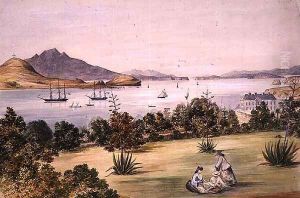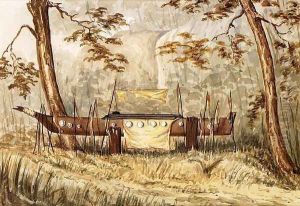Henry James Warre Paintings
Henry James Warre was a British officer, artist, and explorer whose life spanned much of the 19th century, a period marked by significant colonial expansion and exploration. Born in 1819, Warre embarked on a military career that would take him far beyond the shores of his native England, leading him to document landscapes and cultures at a time when such regions were largely unknown to his countrymen.
Warre's most notable contribution to history and art stems from his expedition across North America in the 1840s. As an officer in the British Army, Warre was tasked with surveying the Oregon Territory amidst growing tensions between Britain and the United States over this strategically important and contested region. It was during this expedition that Warre's talents as an artist came to the fore. He produced a series of sketches and watercolors that captured the majestic landscapes of the Pacific Northwest, as well as the lives and practices of its Indigenous peoples. These works are invaluable not only for their aesthetic quality but also for their historical documentation of a time and place undergoing rapid change.
After his return to England, Warre continued his military career, serving with distinction in various postings. Despite the demands of his military duties, he remained active as an artist, producing works that reflected his travels and experiences. His artistry is characterized by a keen eye for detail and a profound appreciation for the natural world, qualities that make his works compelling to both historians and art enthusiasts.
Warre retired as a General and passed away in 1898, leaving behind a legacy that bridges the worlds of art and military service. His artworks, particularly those from his time in North America, provide a visual record of 19th-century frontier life and landscape. They are held in high esteem and can be found in museum collections and archives, serving as a testament to his skill as an artist and his adventurous spirit as an explorer.

